In Praise of the Bad Transgender Object: Rocky Horror
Cáel m. Keegan / Grand Valley State University

Author’s Note: This column is the first in a three-part series examining instances of “bad” transgender popular culture. In this series, I will explore how the demand for “good” transgender representation is shifting the history and aesthetics of transgender media.
Let’s be honest: The Rocky Horror Picture Show (Sharman, 1975) is a bad transgender film.
Despite America’s ongoing cultural fascination with Rocky Horror, which continues its run as the longest theatrical release in US history (Schwab), the 1975 cult classic is much-maligned in current transgender politics. As the transgender community has gained a new cultural voice in the past decade, we have also taken issue with the legacy of media purporting to represent our identities and experiences: Transgender activists and audiences have rejected earlier modes of story-telling that pigeonhole us as murderous villains or tragic victims, and we have demanded greater authenticity in writing, casting, and direction. The emergence of mainstream transgender identity politics has resulted in a new set of conditions that must be met for transgender media to be considered “good.”
“Good” transgender media is media that casts transgender actors as transgender characters. It is media that is written and directed by transgender creators. It is media that allows transgender characters to be more than just narrative or political tokens. “Good” transgender media is authentic, progressive, and diverse. Good transgender media is Pose (FX, 2018-present), not Boys Don’t Cry (Peirce, 1999). It is Tangerine (Baker, 2015), not Sleepaway Camp (Hiltzik, 1983). Good transgender media is media that makes us visible, but in the right ways—specifically because they are not the bad, old ways we endured during the bad, old days, before we had a marginal amount of control over how we were represented.
And yet, as “good” transgender visibility has risen, so too has the violence directed against transgender bodies: Five years after Time magazine heralded Laverne Cox’s role on Orange is the New Black (Netflix, 2013-19) as a transgender civil rights “tipping point” (Steinmetz), anti-transgender murder and hate crimes are on the rise. Rights and protections that were provisionally extended to us during the Obama era have been dramatically and intentionally rescinded. Transgender people have become the new (old) gender scapegoats of a whiplash conservative retrenchment, carried out at a dizzying pace.
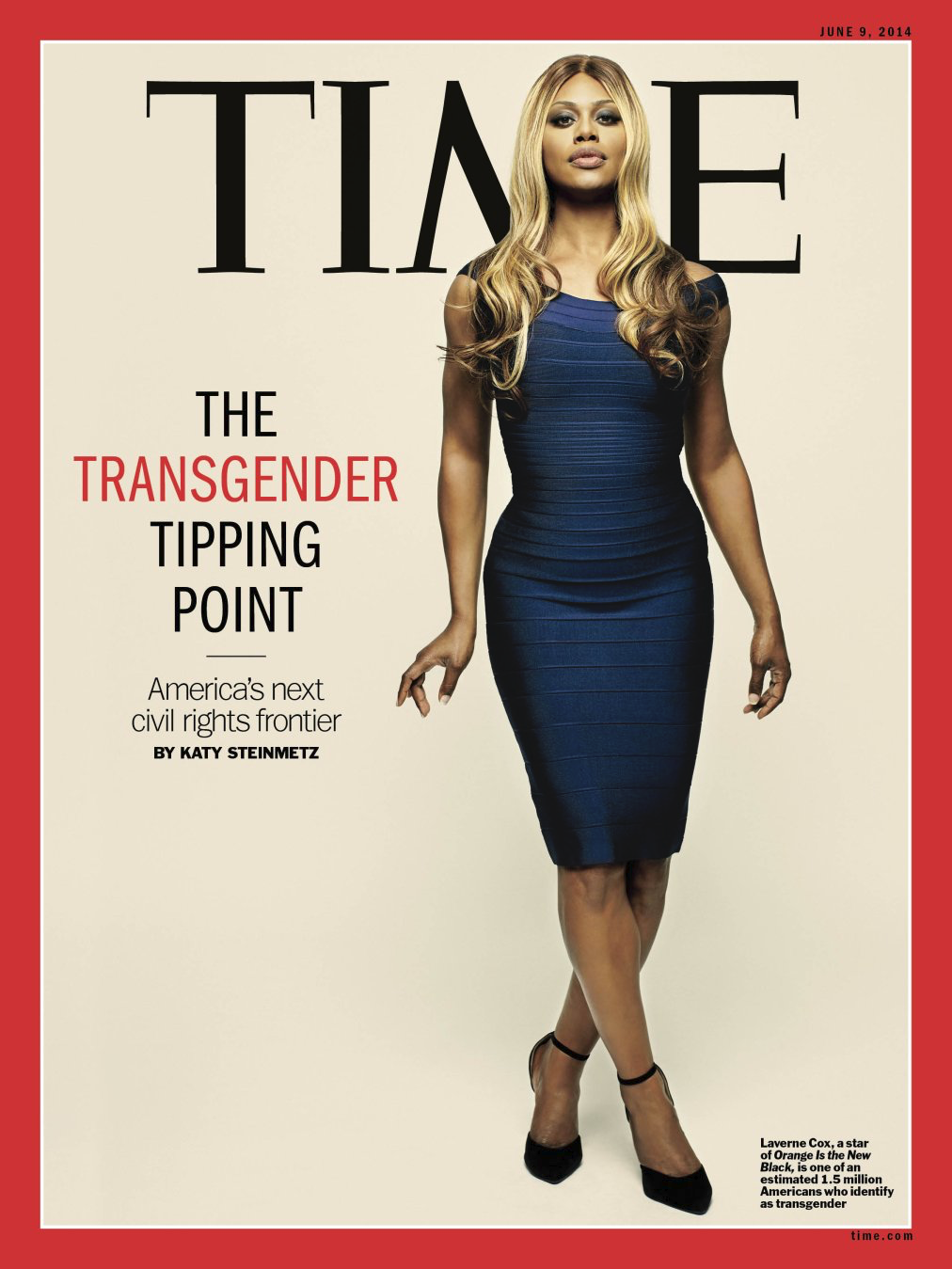
In this context, one has to wonder about the relative value of media visibility: Of what value is cultural recognition, when it can so easily be weaponized against us? Or, as transgender studies scholar Eric Stanley puts it, “What are the stakes of familiarity, when familiarity breeds contempt?” (p. 609). The bad, old days are back, with a vengeance: Welcome to the New Bad Era.
By the standards of “good” transgender media, The Rocky Horror Picture Show is most certainly bad. Not only does the 1975 film feature a cisgender actor (Tim Curry) as the transgender/cross-dressed Dr. Frank N. Furter, but it represents that character as deranged, sexually manipulative, and violent. Although the film has become a staple of 21st century pop nostalgia, Rocky Horror is often excoriated in transgender communities for its seeming citation of these stereotypes, which by the late 1970s had become entrenched in American popular culture as well as in certain strains of feminist discourse.
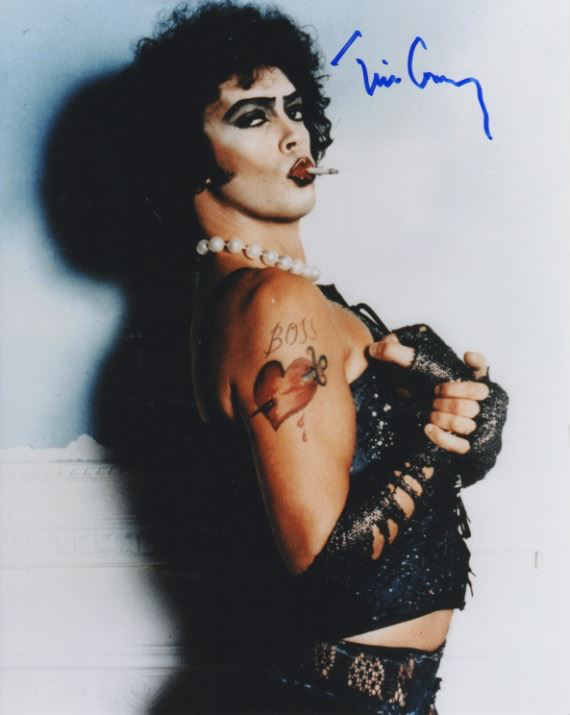
Janice Raymond’s infamous claim in The Transsexual Empire (1979) that “all transsexuals rape women’s bodies” (104) comes four years after Rocky Horror’s release, but the elevation of anti-transgender feminist discourse in our current moment makes it difficult to not view Rocky Horror as a citation of those attitudes. Richard O’Brien, the genderqueer/non-binary creator of the original Rocky Horror stage musical, recently intensified this suspicion of the film when he stated that he agreed with feminist Germain Greer that transgender women could not become women, but were instead “an idea of a woman” (Duffy).
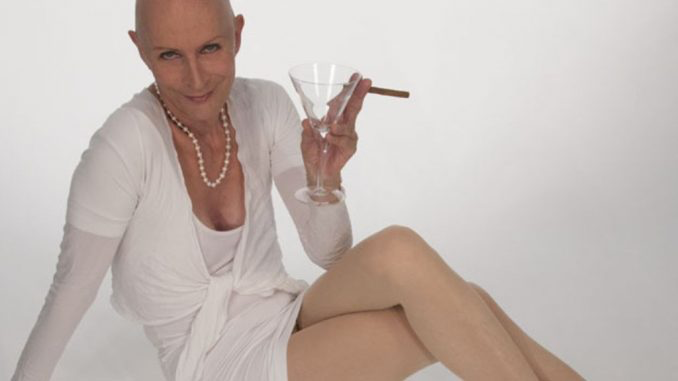
All of this means that Rocky Horror epically fails the current representational and political standards of “good” transgender media. The critiques of Rocky Horror and O’Brien that transgender women have made and continue to make are justified and necessary. But still, there is something about this film that exceeds its apparently transphobic address.
As a transgender person, I’m not supposed to appreciate Rocky Horror. And yet, I do. Why?
The film was perhaps my first encounter with anything that might be called “transgender” representation, and even today I find myself returning to it over and over again, trying to grasp its strange politics. If we look closely, we find that what at first glance looks like a nonsensical film about an insane cannibalistic transgender scientist who tortures innocent people is simultaneously a story about a transgender alien (Dr. Frank N. Furter) who has left his home planet looking for a place where his queer desires will be accepted. He travels from planet to planet, but they are all the same, and he is consistently rejected. Finally, he lands on Earth and discovers how to create life. He uses these powers to create a human companion for himself, Rocky Horror, but this cross-species relationship offends the aliens from his home planet, who kill him. The film ends with a lament about how Earth, without the transgender figure of Frank N. Furter, is “lost in time, and lost in space/and meaning.”
If we set aside our modern instincts that Rocky Horror is representationally “bad” and examine these deeper features of its narrative, we find that the film ingeniously inverts the medical discourses of transgender pathology that were developing in the mid-1970s: In the film, Dr. Frank N. Furter has seized the means of gender production from the hands of the medical industry, and has produced his own “monster”—the ideal, white cisgender body of Rocky. This is a reversal of the classic story of Dr. Frankenstein and his monster, which has often been used to symbolize the relationship of surgeons to transgender people. In Rocky Horror, the transgender creator is granted the power of scientific knowledge, while the cisgender body is reduced to the speechless object of his desire.
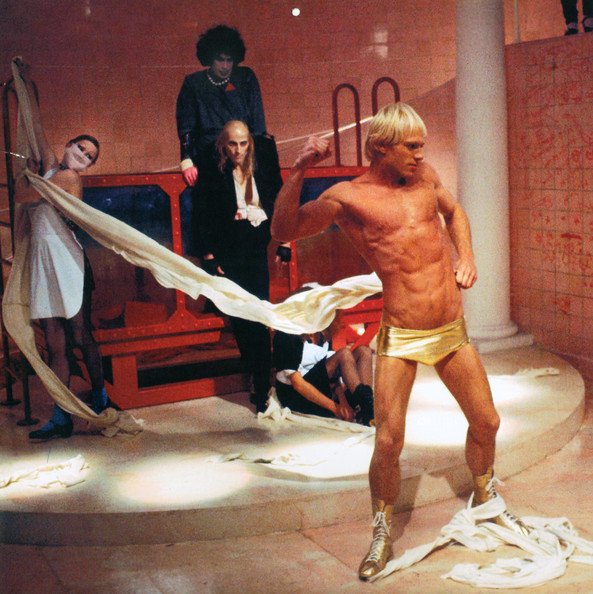
This reversal is indeed terrifying and revolting, precisely because it places the transgender subject in control of gender and sexuality. We witness the resulting mayhem through the perspective of the chaste, heteronormative couple—Brad Majors (Barry Bostwick) and Janet Weiss (Susan Sarandon)—who fall under Dr. Frank N. Further’s thrall and are “transduced” into gender non-normativity, queerness, and sexual liberation. Rocky Horror thus reverses the process of gender transition, producing trans bodies (Brad and Janet become copies of Frank N. Furter) from cisgender ones.
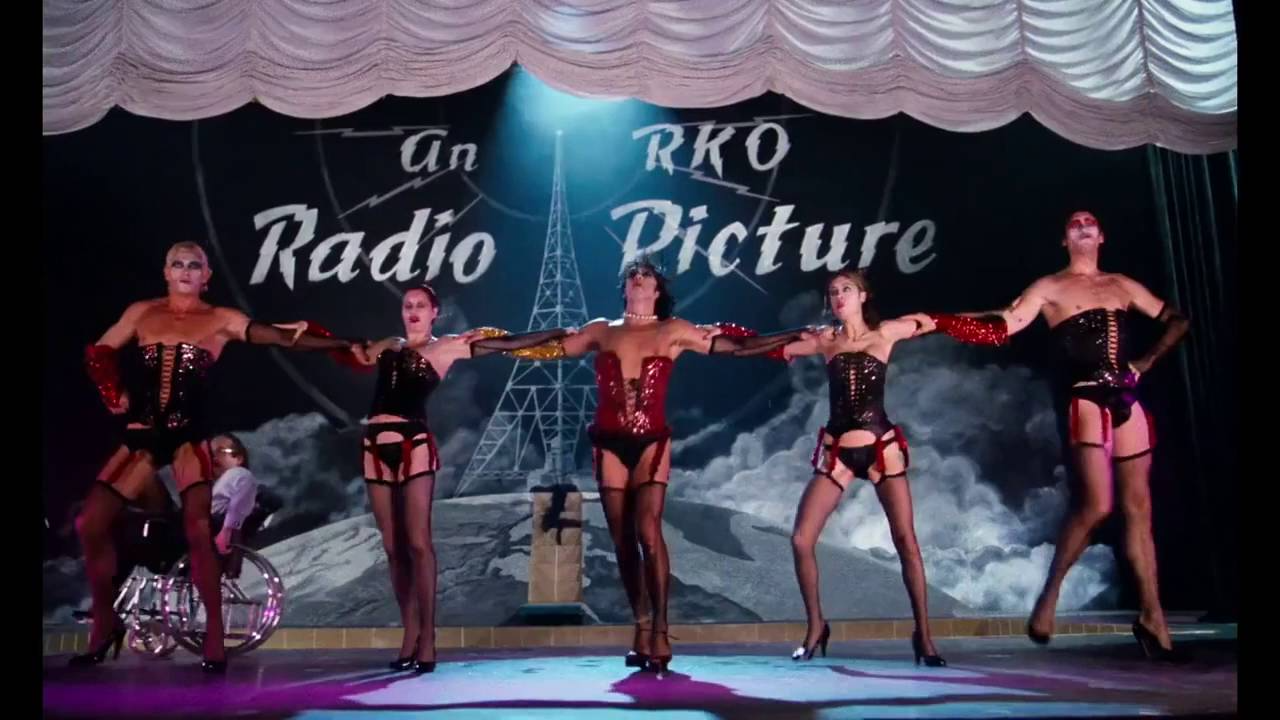
This very radical transgender politics often goes unrecognized by audiences, I would argue, precisely because the film’s representational address appears to be transphobic.
Is Rocky Horror bad? If we wish to limit the archive of transgender media to objects that primarily uphold the standards of positive representation, then yes, it’s pretty bad. But if we’re willing to consider a less comforting and more confusing archive, then we might find room for The Rocky Horror Picture Show—a film with a now-alien politics that looks very unlike our recent efforts to make transgender life normal, included, respected.
Perhaps the actual question is, do we want to be good?
Image Credits:
- Dr. Frank N. Furter takes the throne. (author’s screen grab)
- Laverne Cox on the cover of Time Magazine, 2014. (author’s screen grab)
- Sweet transvestite: A signed photo of Tim Curry as Dr. Frank N. Furter. (author’s screen grab)
- The Rocky Horror Show creator Richard O’Brien, who identifies as “third sex.” (author’s screen grab)
- Rocky Horror’s monstrous cisgender body is revealed. (author’s screen grab)
- Wild and untamed things: Frank N. Furter copies in the film’s ending kickline. (author’s screen grab)
Duffy, Nick. “Rocky Horror Star Richard O’Brien: Trans Women Can’t be Women.” Pinknews, 8 March 2016. https://www.pinknews.co.uk/2016/03/08/rocky-horror-star-richard-obrien-trans-women-cant-be-women/
Raymond, Janice. The Transsexual Empire: The Making of the She-Male. MIT Press, 1979.
Schwab, Katherine. “After 40 Years, Rocky Horror Has Become Mainstream.” The Atlantic, 26 September 2015, https://www.theatlantic.com/entertainment/archive/2015/09/after-40-years-rocky-horror-has-become-mainstream/407491/
Stanley, Eric. “Unrecognizable: On Transgender Recognition in 2017.” South Atlantic Quarterly, 116.3, July 2017. 605-611.
Steinmetz, Kathy. “The Transgender Tipping Point.” Time, 29 May 2014. https://time.com/135480/transgender-tipping-point/
Hi! I just wanted to say thank you for this article. I just got into Rocky Horror and really enjoyed it and loved Frank. But I just couldn’t help thinking that it seems a little homophobic. But I really agree with your idea that if we want to be good, we can appreciate the film for what it meand to us. The original intentions and stereotypes are there, but it is still fun, and good music, and inspiring in a way to young LGBT kids. Thank you
Pingback: Reflecting on The Cult Afterlives of THE ROCKY HORROR PICTURE SHOW on it's 45th Anniversary - Nightmare on Film Street
First of all, this play (and subsequent movie) were WAAAAY ahead of their time. It was punk before punk. The music was not at all like what the 1970s was offering. It was probably the first time the words “transvestite” and “transsexual” were uttered on a movie screen. Most of all it was meant to be fun. NOBODY knew what cis- meant in the 2000’s, let alone the 1970’s. 99% of today’s transgender community wasn’t even around back then. Rocky Horror was a part of its time period. You cannot cancel it out and it should certainly not be called bad. How can the transgender community take seriously a movie that used the terms “transvestite” and “transsexual” together?
All minorities go through an evolution in film. The first roles in movies for Blacks were demeaning and subservient. If there was a gay character in a movie in the 1960’s s/he was the villain, tortured, murdered or thrown into jail for life. And it was barely any better during the 1970s and 1980s.
To show you how much in the dark people were about sexuality back then, I was at a showing of the movie in early 1980’s in New York and we had a huge argument with some of the straight people there. They were claiming Frank-n-Furter was not gay!! Seriously!! They were adamant. He only sang he was “making a man with blond hair and a tan.” Dressed in a diaper no less. Nothing gay about that I guess. Perhaps an argument can be made Frank-n-Furter was pansexual or beyond. But he was not straight. The fact that the argument was either gay or straight shows how ignorant we all were over transgendered people. We were fighting in the streets and courts for decades just to get basic rights for gays and lesbians.
I believe I can speak for the gay audiences in the 1970s and 1980s. We looked at Frank-n-furter as a campy gay guy doing drag. I knew only one transgendered person back then and she loved the movie. The movie is a gem.
And the whole gender/sex angle of this argument pales in comparison to what the movie was really about. Brad and Janet were the only Americans in the entire film. (Eddie was played by Meatloaf, an American, but his nationality was not pertinent.) Rocky Horror Picture Show was a satire of the ignorance and provincialism of the United States and its religious citizenry.
First of all, this play (and subsequent movie) were WAAAAY ahead of their time. It was punk before punk. The music was not at all like what the 1970s was offering. It was probably the first time the words “transvestite” and “transsexual” were uttered on a movie screen. Most of all it was meant to be fun. NOBODY knew what cis- meant in the 2000’s, let alone the 1970’s. 99% of today’s transgender community wasn’t even around back then. Rocky Horror was a part of its time period. You cannot cancel it out and it should certainly not be called bad. How can the transgender community take seriously a movie that used the terms “transvestite” and “transsexual” together?
All minorities go through an evolution in film. The first roles in movies for Blacks were demeaning and subservient. If there was a gay character in a movie in the 1960’s s/he was the villain, tortured, murdered or thrown into jail for life. And it was barely any better during the 1970s and 1980s.
To show you how much in the dark people were about sexuality back then, I was at a showing of the movie in early 1980’s in New York and we had a huge argument with some of the straight people there. They were claiming Frank-n-Furter was not gay!! Seriously!! They were adamant. He only sang he was “making a man with blond hair and a tan.” Dressed in a diaper no less. Nothing gay about that I guess. Perhaps an argument can be made Frank-n-Furter was pansexual or beyond. But he was not straight. The fact that the argument was either gay or straight shows how ignorant we all were over transgendered people. We were fighting in the streets and courts for decades just to get basic rights for gays and lesbians.
I believe I can speak for the gay audiences of the 1970s and 1980s. We looked at Frank-n-furter as a campy gay guy doing drag. I knew only one transgendered person back then and she loved the movie. The movie is a gem.
And the whole gender/sex angle of this argument pales in comparison to what the movie was really about. Brad and Janet were the only Americans in the entire film. (Eddie was played by Meatloaf, an American, but his nationality was not pertinent.) Rocky Horror Picture Show was a satire of the ignorance and provincialism of the United States and its religious citizenry.
This is an amazing essay and I learned so much. Thank you for writing it
Oh absolutely this is no good for trans rep. i do think it’s pretty funky to watch though
Thank you so much for your article! I just started the movie and as soon as I’ve heard the first Song of the Doctor I went to Google and searched “Is the rocky horror picture show transphobic”.
I always thought the movie was very beloved by todays lgbtq+ youth, hence I was quite shocked from the song and the Presentation of the Doctor. But I think if you see him as a drag queen it’s less bad. But as a (almost) cis Person, in the end I dont have a say in it. Nonetheless, I guess the movie was pretty groundbreaking back in the Day regarding Sexual liberation. I’m still watching, but I enjoy it so far!
I just watched Rocky Horror for the first time and was intrigued by the not so subtle trans themes controlling the narrative. I began to wonder whether Freddie Mercury borrowed some of his image from Tim Perry.
Thank you for your spot-on insights into the disruptive and subversive message of o’Brien’s creation. Tim Curry’s performance was both powerful and seductive, and o’Brien’s narrative nothing short of dizzying. He spun his viewers around and around until they didn’t know up from down, alien from Earthling, cis gender from trans. Brilliant!
“Good”transgender media can go fuck itself.
I had always assumed that the film was quite popular among today’s LGBTQ+ youth, therefore I was taken aback by the song and the Doctor’s presentation. But I think it’s less horrible if you think of him as a drag queen. But, as a (nearly) cis person, I don’t have a voice in the matter. Nonetheless, I believe the film was innovative in terms of sexual emancipation at the time. I’m still watching, but so far I’m like it!
But the criticism totally misses the point? “This isn’t a good trans move,” well, it’s not supposed to be. Dr. Frank N. Furter literally says “I’m just a sweet transvestite,” not the appropriate-for-the-seventies “transsexual.” A transvestite is not the same as being trans. By today’s standards, a “transvestite” is merely anyone who elects to dress as the opposite gender for fun or for work, essentially, a drag queen. Not someone who is trans, someone who DRESSES like they are, presents like they are, not someone who is. Like every drag queen ever has said, “drag is what you do, trans is who you are.” And no, being not cis is not a requirement for drag, either, making that criticism also invalid if you actually listen to the lyrics. Why would the character specify being a “transvestite” if they were actually trans? Tim Curry says the word “transsexual” two words later. Either the creator of the movie or the musical even SAID Dr. Frank N. Furter wasn’t a trans woman when critiques much like this first arose. Literally in 2022, the closest direct translation of “I’m just a sweet transvestite from Transsexual, Transylvania” is “I’m just a sweet drag queen from Transgender, Transylvania.” THAT is all I will defend of the movie. The associations with violence and creepiness from any queer or cross-dressing (which isn’t a gender identity just FYI) character is not good regardless of what I said above. More to the point, you can’t just point at the character and say “is trans because I said so” when the character’s first solo song is specifically defining their identity as something more akin to a drag queen or anyone who simply likes to dress as the opposite gender.
Sam, thank you for your more accurate analysis. Transsexual is a PLACE in the play and the film. Not who anyone is. The author is biased by his own viewpoint because there simply is nothing about transsexual persons or transgender persons in the piece.
Riff at the end even says his planet is named Transexual in the Galaxy of Transylvania. The party guests are called Transylvanians. O’Brien was having some fun with the prefix “trans” in wordplay, nothing deeper than that.
A last note
That’s why the remake a few years ago was a complete failure.
Frank is not transgender.
He is definitely a male.
Cox’s portrayal made no sense and was distracting.
Rocky Horror was always a weird movie that accomplished nothing for trans people, accept maybe give their hecklers and bullies some fodder to throw our way. Not sorry. Doesn’t mean you can’t like the movie, or that you need to defend it, but do what you want. I’m going to continue to hate it, and enjoy hating it. Everyone hates on the remake, but I bet I’d like it more frankly. I eventually DID see the movie, under the worst circumstances possible, and not after I had to endure the following scene play out too many fucking times in my life. I swear cis ppl, if you think someone is trans, and they’re in boymode JUST LEAVE US THE FUCK ALONE K?
I wasn’t even OUT, or in transition before I lost count of the number of Dbags who would say my nickname was now “Dr. Frankfurter.” If I objected they’d ask a
“So you’re not a sweet transvestite?” a
“No. What’s wrong with you? What are you talking about?” a
“You’re not from transexual Transylvania?” a
“Wtf r u talking about” a
“No way, I know you’ve seen the movie. I know you know the song! Sing the song!”
“What fucking song!?”
And then the bastard starts singing “Sweet Transvestite.”
Which honestly is tied with “That dude looked like a lady” for my most hated transphobic anthems.
It doesn’t matter if any of the characters aren’t trans in actuality, because that’s just a cop out way for the movie to side step what it’s doing, which is having a laugh at gender non conformity, and people like us are simultaneously the butt of the joke, and not involved whatsoever thank-you-very-much. The whole thing is just so perfectly crafted to be both a waterboarding room for us, and a “get out of jail free” card for transphobic behavior.
Hey there, deeply appreciate looking at the critiques of Rocky Horror; and your usage of quotation marks to distinguish the opinion of “good” and “bad”, rather then attributing complete moral failings.
I am producing an essay of the flaws of the representation of RHS, and appreciate your insights and the reaching of what seems to be an understanding of RHS as playing on the campy horror tropes of the films before it and the fun of performance, but that it does not still justify the harm in it’s use.
Overall, RHS can be a “fun” time for some, and has led to helping a few trans performers show off and perform an act of “acceptable” drag for public. Laverne Cox portraying Dr Frank’N’Furter is not the first time that a trans performer, but certainly on such a highly public platform.
But accounts like Kat’s does show how RHS has been used to hurt and throw insults and degrade others with insults. Mainly by bigots who could care less what the story was about, but the movie had borrowed influences from material bigots use.
RHS is not neutral material. It was a comedy show in the 1970’s, and embraced by an irreverent audience of heterosexuals and LGBTQIA+ people who embraced “fun”, camp, and stereotypes that it all became a cult classic.
A lot of it’s taste is subjective, whether for good or for ill. Which is what Keegan seems to be going for.